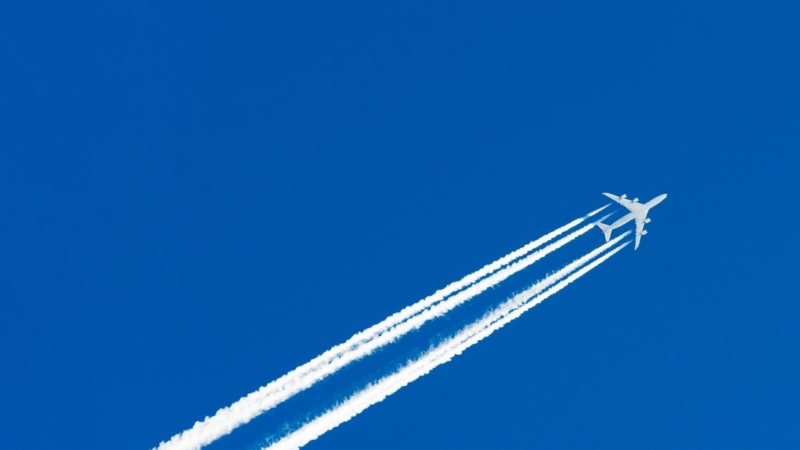Leading the Way in Contrail Avoidance
13 December 2023As part of our work to reduce the aviation industry’s non-CO2 emissions, we’re exploring measures to mitigate the impact of contrails – the visible trails of ice crystals that can form behind aircraft flying at high altitudes. I joined over 2,250 scientists, researchers and policymakers at the CANSO/EUROCONTROL Sustainable Skies Conference in Brussels recently to present our work in this area, and how it could contribute to the global push for climate neutrality and sustainability.
Aviation contributes to around 3.5% of human-caused global warming, including from both CO2 and non-CO2 emissions. It’s estimated that more than half of the impact on Earth’s radiation balance caused by aviation is attributed to contrail cirrus, i.e. cirrus clouds formed from the condensation of aircraft engine exhaust. These cirrus-like clouds can influence the balance of incoming solar radiation and outgoing infrared radiation, which can have both warming and cooling effects on the atmosphere. Overall, aviation-induced cloudiness has a net warming effect.
If we can avoid producing warming contrails, we therefore have the potential to significantly reduce aviation’s climate impact in the short-term. We’ve been actively supporting research into understanding contrail production over the North Atlantic for the last few years, and we’re continuing this through the SESAR 3 research programme.
Together with Brice Bergantz from Airbus, I presented the work of CICONIA, a SESAR project focused on contrail mitigation, at the Sustainable Skies conference, explaining to delegates how the project combines scientific and operational expertise to create new ideas for reducing the impact of contrails.

Siân Andrews, centre, taking questions.
The CICONIA project aims to further our understanding of non-CO2 effects, and to trial contrail avoidance solutions that can reduce the climate impact of aviation. Within the project NATS’ main focus is on designing and conducting trials of potential air traffic management methods over the North Atlantic, such as pre-flight planning and alternate route options, tactical decision making, and airspace reservation strategies. During the trials, the goal is to demonstrate operational feasibility, understand timing requirements for accurate forecasts, and assess the impact on non-CO2 emissions, fuel burn, operational costs and network effects.
In addition to the flight trials, we’ll use computer simulations and human-in-the-loop experiments to analyse how these methods perform in various operational scenarios. Other partners will enhance the trials by assessing the effectiveness of the solutions and considering the impact on balancing demand and capacity at the network level.

Front centre – Mike Hornby, NATS Airspace Concepts Manager, who also took part in a panel discussion at the conference in his role as CANSO Ops Standing Committee Chair
The conference demonstrated that the industry is making encouraging progress in developing contrail avoidance solutions. We can no longer ignore this and the overall feeling coming out of the conference was that, while we need much more research, there is clear evidence that avoiding warming contrails, and developing ways of implementing contrail avoidance solutions, has the potential to significantly reduce the climate impact of aviation.

The SESAR 3 CICONIA project is funded by the EU under the Horizon Europe programme, [grant number 101114613]. UK participants receive funding from UK Research and Innovation (UKRI) under the UK government’s Horizon Europe funding guarantee [grant numbers 10091271 (NATS) and 10073316 (University of Manchester)].
Comments
Please respect our commenting policy and guidelines when posting on this website.
